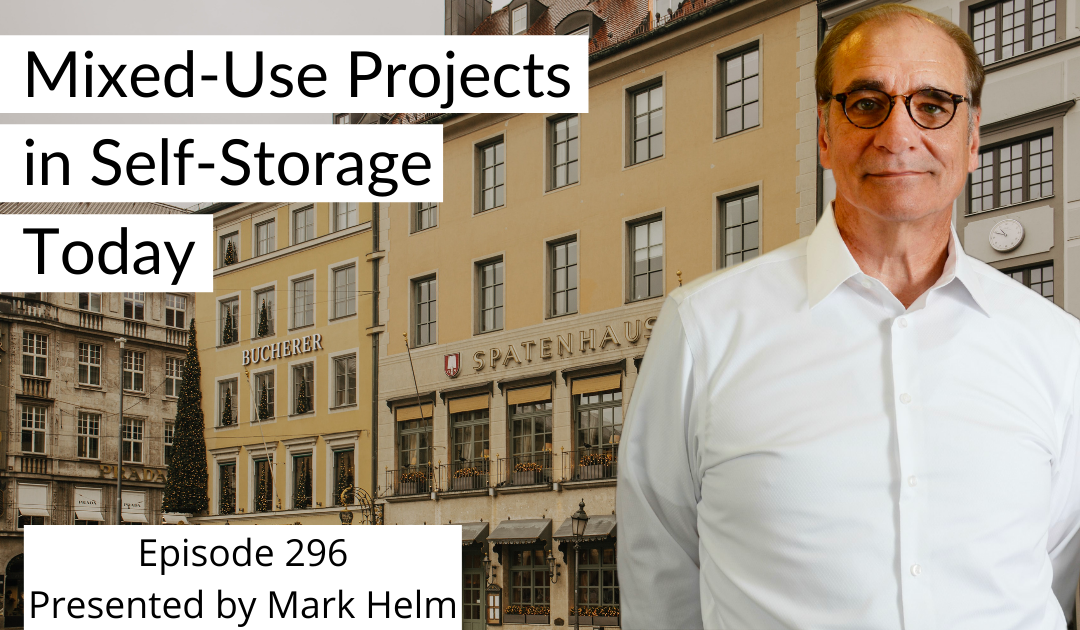There’s no doubt about it. Self-storage is harder to get into, grow, or figure out today than ever.
Prices are still high, CAP rates low, lots of new product to compete with, and many other challenges to tackle as a small investor.
Here is one way to reduce the risk, get in the business (or grow it), and create future expansion for when the market shifts again — mixed-use projects.
Some of the most profitable projects we have been involved with are mixed-use conversions.
We will take an empty building, redevelop part of it as self-storage, and use the rest to generate income from other uses.
Here are some of the uses we have combined with self-storage in the same project:
- Retail users.
- Office users.
- Bulk warehouse.
- Record Storage.
- Indoor parking (very profitable).
Here are some other uses we could have considered (and currently are).
- Multi-family.
- Last-mile logistics.
- Flex space.
You see a lot more mixed-use projects in dense urban markets where land is expensive. And yes, REITs will be involved in some of these types of facilities.
Case History
In our early days, we did a project in a gentrified urban core area in our hometown, adjacent to the Central Business District.
The project was put together towards the end of the Great Recession, so I was very pensive about doing it.
I had a partner pushing me to do a project. I also had a friend who was looking for a new home for his sign company.
I found a building that satisfied his need for a sign company and was in the area we thought would be good for self-storage.
We carved off 9,000 square feet of a 46,000 square foot building for the sign company and put two-story self-storage in the remaining portion of the building.
We made the owner of the sign company a partner so he would be motivated to relocate when it was appropriate to expand storage into his space. It worked out well for him.
His blended rate between office and warehouse space was around $5 per square foot, so we had $46,000 in yearly income in place before we rented our first self storage unit. Given my concern, the lending environment in 2010, this income helped put me over the top to do the project.
We owned that project for ten years and made a lot of money on the exit.
Today’s Realities
It is a totally different time than 2010, but since then, I have been involved in many mixed-use projects.
I like them because they can reduce the risk by having other sources of income. Haven’t we all heard about multiple streams of income?
I also like having income being generated from my future expansion space.
Conversions lend themselves very easily to mixed-use projects. I don’t think there has been but one conversion I have been involved in that has not been some type of mixed-use project, at least for part of its life.
Yes, it requires more skill sets to put together. Yes, you may have more initial capital expenses upfront if you are creating office or retail space. I have paid commissions to local agents to bring tenants and have funded tenant improvements to get tenants as well (all of the disadvantages I rail against and why self-storage is so good as an investment for the small investor).
But don’t overlook this gem I haven’t talked about much in these episodes.
It can make a project doable that you may be interested in but don’t think the timing is the best. For example, this concept could allow you to get a foothold in a market, be profitable, then expand the self-storage fully when there is more demand.
We have also used this concept for existing projects in overbuilt markets.
We had one conversion project we were doing in phases. We had a bulk warehouse storage user in the expansion area. When we finished Phase I, that user’s lease was up, and we were getting ready to start phase II of the conversion when we got wind of a large REIT managed project opening on this submarket.
We estimated they would be hitting the market behind us but during the lease-up.
We elected not to do Phase II and put that space into indoor parking and to wait until the trade area had stabilized and there was demand.
That turned out to be a good decision, and we were getting $200 per parking space in that expansion area of the project.
Conclusion
So don’t overlook this concept. Utilize it strategically today to minimize risk when appropriate.
If you have some expertise in another area of real estate, don’t rule out using your knowledge to create a mixed-use project as a way to dealing with some of the challenges we face today in the self-storage world.
Remember, there are always challenges in whatever we undertake. However, there are no limits to the potential solutions to those challenges. What separates the successful from the rest is often the creative solutions we can develop and the courage to implement them.



